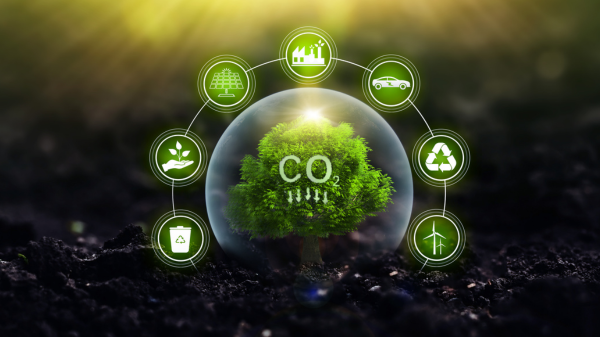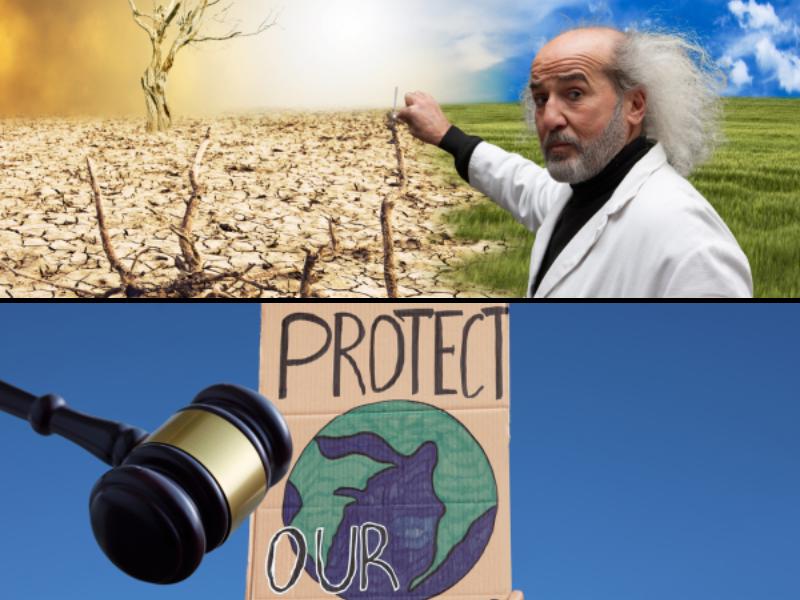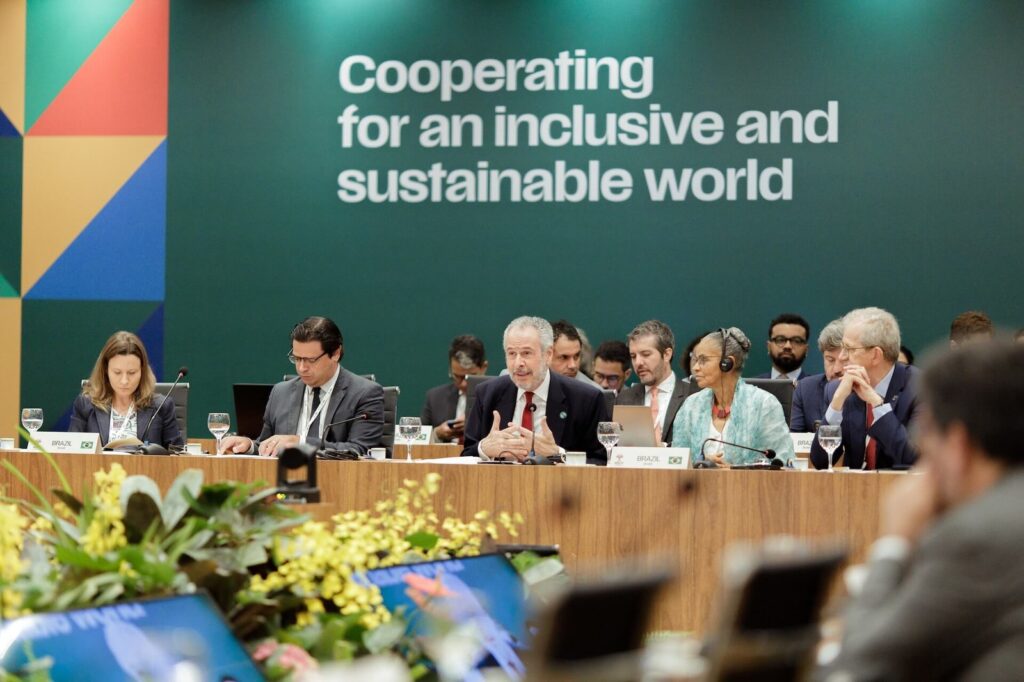A June white paper from the Texas Public Policy Foundation (TPPF) has found that carbon dioxide (CO2) emissions from the U.S. power sector do not meet the threshold set under the Clean Air Act (CAA) to be considered a significant contributor to air pollution that endangers public health.
Under Section 111 of the CAA, the U.S. Environmental Protection Agency (EPA) does not have the authority to regulate emissions from a particular source unless that source “contributes significantly” to air pollution that puts public health at risk. However, EPA has ruled with its 2009 “Endangerment Finding” that the current and projected concentrations of CO2, along with five other greenhouse gases in the atmosphere—methane (CH4), nitrous oxide (N2O), hydrofluorocarbons (HFCs), perfluorocarbons (PFCs), and sulfur hexafluoride (SF6)—threaten public health and the welfare of current and future generations.
As TPPF points out, “unlike the criteria pollutants regulated under the Clean Air Act, CO2 is not directly harmful to humans. In fact, it is essential to all life, being an output of the respiration process of all humans and animals and an input to photosynthesis. CO2 levels would need to reach 20 to 30 times the current concentration in the atmosphere in order to have a negative impact on oxygen levels and respiration. Therefore, the impact of CO2 on the public health hinges on its effect upon global temperatures and the resulting impacts on global weather and climate.”
The United States was responsible for only 13 percent of global CO2 emissions from fossil fuels in 2023, TPPF notes, a decline from 24 percent of global emissions in 2000. Further, CO2 emissions from fossil-fuel-based electricity generation comprised only four percent of global emissions from that sector, a number that is also declining.
Highlighting that decline is the May release of the U.S. Energy Information Administration’s (EIA) annual U.S. Energy-Related Carbon Dioxide Emissions report, which has found, once again, that natural gas continues to be at the forefront in the decline of GHG emissions in the United States.
According to the report, power sector CO2 emissions remained near their 2023 levels in 2024, even with a three percent increase in electricity generation.
“Although overall electricity generation increased by 3 percent, or 122 terawatt hours (TWh), in 2024, changes in generation sources resulted in sectoral CO2 emissions remaining near 2023 levels,” EIA states. “Although growth in natural gas-fired generation exceeded reductions in coal-fired generation, CO2 emissions did not increase as much because natural gas emits less CO2 per kilowatt hour than coal when combusted.”
Further, the supplemental report appendix and methodology shows that natural gas is responsible for 61 percent of the power sector’s emissions reductions since 2005.
The EIA report is just one in a string of recent of studies showing how natural gas has had a significant impact on the reduction of GHG emissions in the United States.
A study from researchers at Miami University in Ohio, published in the peer-reviewed journal Energy Economics in May, found that between 2007 and 2019, the fracking-induced shale boom was responsible for an average annual per capita reduction in CO2 emissions in the United States of 10.5 percent, as well as a 7.5 percent reduction in annual total GHG emissions.
“We find that the shale gas boom has played a pivotal role in reshaping the U.S. energy landscape, resulting in a greener economy,” the researchers conclude.
In January, the U.S. Department of Energy’s National Energy Technology Laboratory found the GHG emission intensity of the country’s energy profile had decreased by 32 percent between 2017 and 2020.
In determining the future long-term effects of U.S. CO2 emissions, TPPF utilized the Model for the Assessment of Greenhouse Gas Induced Climate Change. This model was “used to predict future global CO2 concentrations and temperatures in a scenario that eliminates U.S. CO2 emissions,” with its baseline a “middle of the road” scenario that has been used by the Intergovernmental Panel on Climate Change (IPCC) in various assessments.
This model showed “eliminating U.S. power sector CO2 emissions by 2030 would reduce the worldwide CO2 concentrations in 2050 by 3.4 ppm, or 0.7%, and reduce the increase in mean worldwide surface temperature in 2050 by 0.015 °C. On the other hand, eliminating all U.S. CO2 emissions by 2030 would reduce worldwide CO2 concentrations in 2050 by 11.4 ppm, or 2.3%, and reduce the increase in mean worldwide temperature in 2050 by 0.052 °C. Note that the measurement error and annual variation in the mean worldwide surface temperature is approximately ±0.1 °C… Therefore, the modeled temperature increase due to future U.S. CO2 emissions—which is itself subject to large uncertainties—is not measurable in the worldwide context, as the modeled impact falls within the measurement error for global temperatures.”
Fortunately, EPA director Lee Zeldin has announced the agency’s decision to rescind the Endangerment Finding after a public comment period that runs through September 15. Members of both of President Donald Trump’s administrations have consistently stated that regulation of carbon dioxide under the Clean Air Act is unnecessary, ineffective, and economically destructive. They also claim that as long as the Endangerment Finding remained in place, efforts to effectively roll back unnecessary environmental regulations adopted in the name of fighting climate change and intended to punish conventional energy producers would likely have failed.
Unfortunately, the actions of the executive branch seem to be in a permanent state of uncertainty, as incoming administrations from opposing political parties and governing ideologies seek to quickly undue the actions of their predecessors they think were not in the public interest. Without action from the legislative branch, there is always the possibility of the return of the Endangerment Finding as early as 2029. Therefore, Congress should recognize that the regulation and taxation of carbon dioxide is against the public good, and pass legislation banning such practices. This is the only true way to ensure against the return of a zombie Endangerment Finding somewhere in the future.
The following documents provide more information about the Endangerment Finding and climate change.
Policy Brief: Should EPA Reverse Its Endangerment Finding on Greenhouse Gases?
https://heartland.org/publications-resources/publications/policy-brief-should-epa-reverse-its-endangerment-finding-on-greenhouse-gases
This Heartland Policy Brief by Joseph Bast makes the case for repealing the Obama-era “Endangerment Finding,” an Environmental Protection Agency (EPA) regulation under the Clean Air Act, forced into existence by the Supreme Court, which argues that that the current and projected concentrations of six greenhouse gases in the atmosphere threaten the public health and welfare of current and future generations.
The U.S. Leads the World in Clean Air: The Case for Environmental Optimism
https://files.texaspolicy.com/uploads/2018/11/27165514/2018-11-RR-US-Leads-the-World-in-Clean-Air-ACEE-White.pdf
This paper from the Texas Public Policy Foundation examines how the United States achieved robust economic growth while dramatically reducing emissions of air pollutants. The paper states that these achievements should be celebrated as a public policy success story, but instead the prevailing narrative among political and environmental leaders is one of environmental decline that can only be reversed with a more stringent regulatory approach. Instead, the paper urges for the data to be considered and applied to the narrative.
The Social Benefits of Fossil Fuels
https://heartland.org/publications-resources/publications/the-social-benefits-of-fossil-fuels
This Heartland Policy Brief by Joseph Bast and Peter Ferrara documents the many benefits from the historic and still ongoing use of fossil fuels. Fossil fuels are lifting billions of people out of poverty, reducing all the negative effects of poverty on human health, and vastly improving human well-being and safety by powering labor-saving and life-protecting technologies, such as air conditioning, modern medicine, and cars and trucks. They are dramatically increasing the quantity of food humans produce and improving the reliability of the food supply, directly benefiting human health. Further, fossil fuel emissions are possibly contributing to a “Greening of the Earth,” benefiting all the plants and wildlife on the planet.
Climate Change Reconsidered II: Fossil Fuels
http://climatechangereconsidered.org/wp-content/uploads/2019/01/Full-Book.pdf
In this fifth volume of the Climate Change Reconsidered series, 117 scientists, economists, and other experts assess the costs and benefits of the use of fossil fuels by reviewing scientific and economic literature on organic chemistry, climate science, public health, economic history, human security, and theoretical studies based on integrated assessment models (IAMs) and cost-benefit analysis (CBA). (Also see the Climate Change Reconsidered II: Fossil Fuels “Summary for Policymakers”: http://climatechangereconsidered.org/wp-content/uploads/2018/12/Summary-for-Policymakers-Final.pdf)
Climate Change Reconsidered II: Physical Science
https://heartland.org/publications-resources/publications/climate-change-reconsidered-ii-physical-science
Climate Change Reconsidered II: Physical Science is an independent, comprehensive, and authoritative report on the current state of climate science, published in October 2013. It is the fourth in a series of scholarly reports produced by the Nongovernmental International Panel on Climate Change, an international network of climate scientists sponsored by three nonprofit organizations: the Center for the Study of Carbon Dioxide and Global Change, the Science and Environmental Policy Project, and The Heartland Institute. (Also see the executive summary of Climate Change Reconsidered II: Physical Science: https://heartland.org/wp-content/uploads/documents/CCR/CCR-II/Executive-Summary.pdf)
Climate Change Reconsidered II: Biological Impacts
https://heartland.org/publications-resources/publications/climate-change-reconsidered-ii-biological-impacts
Released on April 9, 2014, Climate Change Reconsidered II: Biological Impacts is an independent, comprehensive, and authoritative report on the impacts of climate change on plants, terrestrial animals, aquatic life, and human well-being. (Also see the Climate Change Reconsidered II: Biological Impacts “Summary for Policymakers”: https://heartland.org/wp-content/uploads/documents/CCR/CCR-IIb/Summary-for-Policymakers.pdf)
Nothing in this Research & Commentary is intended to influence the passage of legislation, and it does not necessarily represent the views of The Heartland Institute. For further information on this subject, visit Environment & Climate News, The Heartland Institute’s website, and PolicyBot, Heartland’s free online research database.
The Heartland Institute can send an expert to your state to testify or brief your caucus; host an event in your state; or send you further information on a topic. Please don’t hesitate to contact us if we can be of assistance! If you have any questions or comments, contact Heartland’s Government Relations department, at [email protected] or 312/377-4000.




